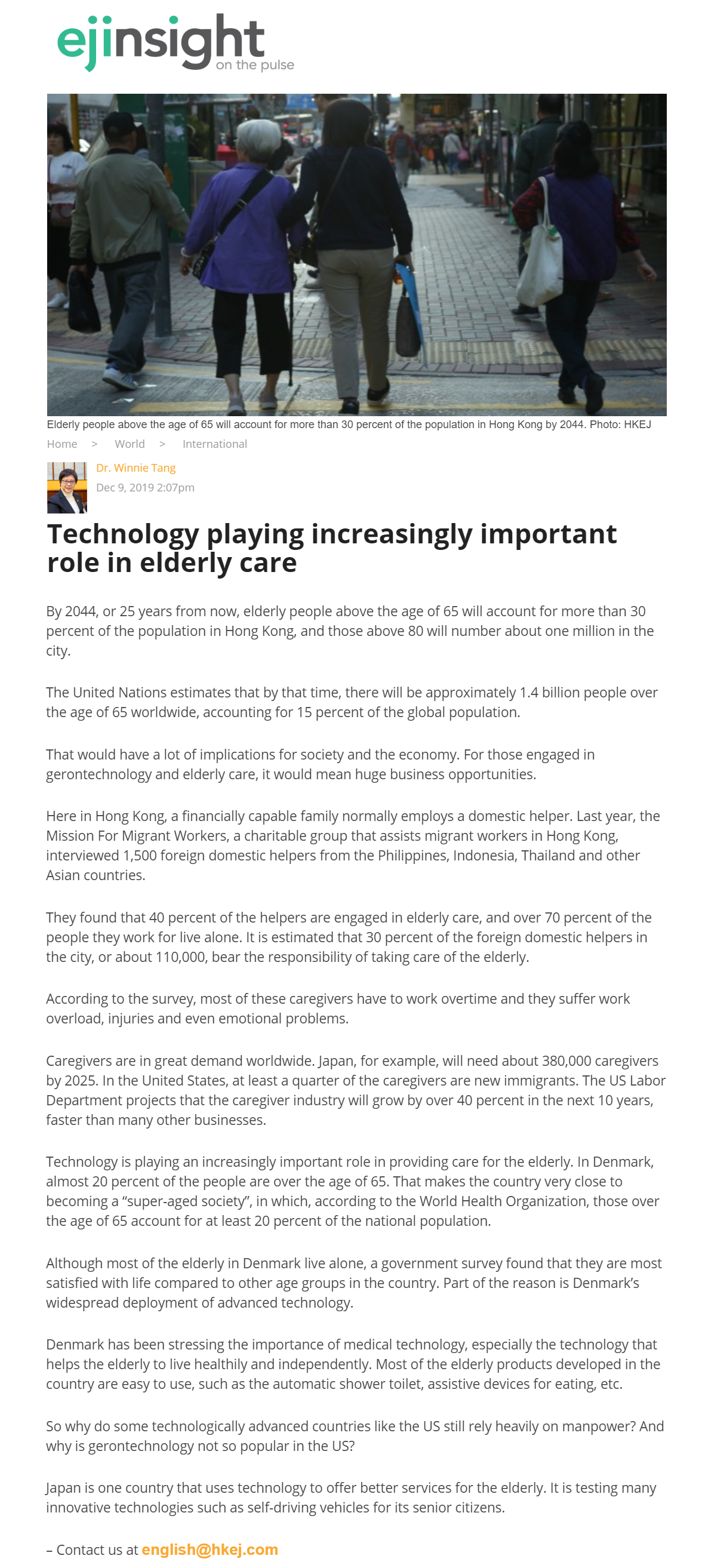網上版請按此

Technology playing increasingly important role in elderly care
By 2044, or 25 years from now, elderly people above the age of 65 will account for more than 30 percent of the population in Hong Kong, and those above 80 will number about one million in the city.
The United Nations estimates that by that time, there will be approximately 1.4 billion people over the age of 65 worldwide, accounting for 15 percent of the global population.
That would have a lot of implications for society and the economy. For those engaged in gerontechnology and elderly care, it would mean huge business opportunities.
Here in Hong Kong, a financially capable family normally employs a domestic helper. Last year, the Mission For Migrant Workers, a charitable group that assists migrant workers in Hong Kong, interviewed 1,500 foreign domestic helpers from the Philippines, Indonesia, Thailand and other Asian countries.
They found that 40 percent of the helpers are engaged in elderly care, and over 70 percent of the people they work for live alone. It is estimated that 30 percent of the foreign domestic helpers in the city, or about 110,000, bear the responsibility of taking care of the elderly.
According to the survey, most of these caregivers have to work overtime and they suffer work overload, injuries and even emotional problems.
Caregivers are in great demand worldwide. Japan, for example, will need about 380,000 caregivers by 2025. In the United States, at least a quarter of the caregivers are new immigrants. The US Labor Department projects that the caregiver industry will grow by over 40 percent in the next 10 years, faster than many other businesses.
Technology is playing an increasingly important role in providing care for the elderly. In Denmark, almost 20 percent of the people are over the age of 65. That makes the country very close to becoming a “super-aged society”, in which, according to the World Health Organization, those over the age of 65 account for at least 20 percent of the national population.
Although most of the elderly in Denmark live alone, a government survey found that they are most satisfied with life compared to other age groups in the country. Part of the reason is Denmark's widespread deployment of advanced technology.
Denmark has been stressing the importance of medical technology, especially the technology that helps the elderly to live healthily and independently. Most of the elderly products developed in the country are easy to use, such as the automatic shower toilet, assistive devices for eating, etc.
So why do some technologically advanced countries like the US still rely heavily on manpower? And why is gerontechnology not so popular in the US?
Japan is one country that uses technology to offer better services for the elderly. It is testing many innovative technologies such as self-driving vehicles for its senior citizens.
Dr. Winnie Tang
Adjunct Professor, Department of Computer Science, Faculty of Engineering and Faculty of Architecture, The University of Hong Kong